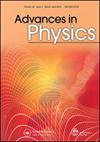Magnetic field effects on excited states, charge transport, and electrical polarization in organic semiconductors in spin and orbital regimes
IF 13.8
1区 物理与天体物理
Q1 PHYSICS, CONDENSED MATTER
引用次数: 51
Abstract
Magnetic field can influence photoluminescence, electroluminescence, photocurrent, injection current, and dielectric constant in organic materials, organic–inorganic hybrids, and nanoparticles at room temperature by re-distributing spin populations, generating emerging phenomena including magneto-photoluminescence, magneto-electroluminescence, magneto-photocurrent, magneto-electrical current, and magneto-dielectrics. These so-called intrinsic magnetic field effects (MFEs) can be observed in linear and non-linear regimes under one-photon and two-photon excitations in both low- and high-orbital materials. On the other hand, spin injection can be realized to influence spin-dependent excited states and electrical conduction via organic/ferromagnetic hybrid interface, leading to extrinsic MFEs. In last decades, MFEs have been serving as a unique experimental tool to reveal spin-dependent processes in excited states, electrical transport, and polarization in light-emitting diodes, solar cells, memories, field-effect transistors, and lasing devices. Very recently, they provide critical understanding on the operating mechanisms in advanced organic optoelectronic materials such as thermally activated delayed fluorescence light-emitting materials, non-fullerene photovoltaic bulk-heterojunctions, and organic–inorganic hybrid perovskites. While MFEs were initially realized by operating spin states in organic semiconducting materials with delocalized π electrons under negligible orbital momentum, recent studies indicate that MFEs can also be achieved under strong orbital momentum and Rashba effect in light emission, photovoltaics, and dielectric polarization. The transition of MFEs from the spin regime to the orbital regime creates new opportunities to versatilely control light-emitting, photovoltaic, lasing, and dielectric properties by using long-range Coulomb and short-range spin–spin interactions between orbitals. This article reviews recent progress on MFEs with the focus on elucidating fundamental mechanisms to control optical, electrical, optoelectronic, and polarization behaviors via spin-dependent excited states, electrical transport, and dielectric polarization. In this article both representative experimental results and mainstream theoretical models are presented to understand MFEs in the spin and orbital regimes for organic materials, nanoparticles, and organic–inorganic hybrids under linear and non-linear excitation regimes with emphasis on underlying spin-dependent processes.磁场对自旋和轨道状态下有机半导体激发态、电荷输运和电极化的影响
磁场可以通过重新分布自旋布居影响有机材料、有机-无机杂化物和纳米颗粒在室温下的光致发光、电致发光、光电流、注入电流和介电常数,产生新出现的现象,包括磁光致发光,以及磁电介质。在低轨道和高轨道材料中,在单光子和双光子激发下,可以在线性和非线性状态下观察到这些所谓的本征磁场效应(MFE)。另一方面,可以实现自旋注入,通过有机/铁磁混合界面影响自旋相关激发态和导电,从而导致非本征MFE。在过去的几十年里,MFE一直是一种独特的实验工具,用于揭示发光二极管、太阳能电池、存储器、场效应晶体管和激光器件中激发态、电输运和极化的自旋相关过程。最近,它们对先进有机光电材料的操作机制提供了关键的理解,如热激活延迟荧光发光材料、非富勒烯光伏体异质结和有机-无机杂化钙钛矿。虽然MFE最初是通过在可忽略的轨道动量下操作具有离域π电子的有机半导体材料中的自旋态来实现的,但最近的研究表明,在发光、光伏和介电极化中,在强轨道动量和Rashba效应下也可以实现MFE。MFE从自旋状态到轨道状态的转变创造了新的机会,通过使用轨道之间的长程库仑和短程自旋-自旋相互作用,全面控制发光、光伏、激光和介电性质。本文综述了MFE的最新进展,重点阐明了通过自旋相关激发态、电输运和介电极化控制光学、电学、光电子和偏振行为的基本机制。本文介绍了具有代表性的实验结果和主流理论模型,以了解有机材料、纳米颗粒和有机-无机杂化物在线性和非线性激发机制下的自旋和轨道机制中的MFE,重点是潜在的自旋依赖过程。
本文章由计算机程序翻译,如有差异,请以英文原文为准。
求助全文
约1分钟内获得全文
求助全文
来源期刊

Advances in Physics
物理-物理:凝聚态物理
CiteScore
67.60
自引率
0.00%
发文量
1
期刊介绍:
Advances in Physics publishes authoritative critical reviews by experts on topics of interest and importance to condensed matter physicists. It is intended for motivated readers with a basic knowledge of the journal’s field and aims to draw out the salient points of a reviewed subject from the perspective of the author. The journal''s scope includes condensed matter physics and statistical mechanics: broadly defined to include the overlap with quantum information, cold atoms, soft matter physics and biophysics. Readership: Physicists, materials scientists and physical chemists in universities, industry and research institutes.
 求助内容:
求助内容: 应助结果提醒方式:
应助结果提醒方式:


